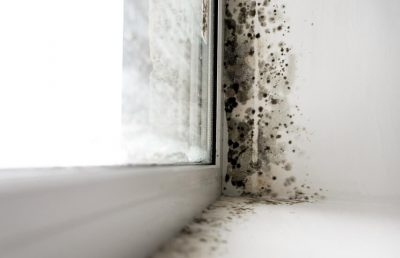We’ve all heard about the advantages of cavity wall insulation and how it can save you money on your bills, but did you even know that it might worsen the situation in some homes?
This does not apply to all houses having cavity wall insulation. In reality, in some circumstances, filling walls with all of those small white beads may substantially heat up the cold residence and substantially lower heating expenditures, which is always a good thing. However, there may be a few things to consider if you’re considering having this done or if you’ve already had insulation installed and are suddenly experiencing mould upon the house’s inner walls.
It’s really a bit of a problem; after all, isn’t insulation beneficial?
Even the government gets in on the game, offering significant grants to all types of households to insulate their walls and reduce carbon and greenhouse gas emissions, so what’s the issue here? Could something that sounds amazing in theory be a poor thing in practice?
First, let’s clarify a few points. Please go through this entire brief article to know it all in brief.

What happens if you put insulation in the wall cavities?
Once the insulation is installed, a crew arrives and drills numerous holes in the wall before pumping millions of small polystyrene beads. It’s worth mentioning that on several surfaces, particularly render, the workers may leave unsightly scars upon the walls, which you won’t be able to disguise with regular paint until you treat them with an outside textured wall coating.
However, if cavity wall insulation is beneficial, why can it cause moisture in some residences?
Simply put, it can be because of various factors, including exterior walls that are in poor condition given the lack of upkeep, harsh weather, or, more commonly, the loss of weather-resistant capacity. There are also things like rubble in the cavity that can ruin a successful installation; qualities that aren’t ‘swept off,’ causing insulation materials to leak from the walls, causing gaps in the insulation.
Water that showers on the walls outside soaks up within the bricks when there is poor masonry or pointing.
This would ordinarily stop at the cavity and not enter the house, but if your inside walls are cold, this could be a sign even though the heating is turned on.
As a result, the filling within the walls begins to transmit moisture toward the inner wall, resulting in dampness. It’s worth noting that if mould grows on your inside walls, this is a very poor indicator.
Is Cavity Wall Insulation Putting Your House at Risk of Damp Problems?
The occurrence of damp problems resulting from cavity wall insulation installation is uncommon. However, it is important to examine before getting cavity wall insulation done. It is always preferable to prevent an issue from arising than to fix one that has already occurred.
Most buildings are suitable for cavity wall insulation; however, it depends on how the estate’s outer walls are managed.
If the property is weatherproofed, you won’t be worried about moisture getting in and getting the insulation soaked and won’t experience damp issues in the future due to the insulation. Thus, you should be able to reap the full benefits of cavity walls, resulting in lower monthly energy expenditures.
To help you out in determining if your home is at risk of damp difficulties as a result of cavity wall insulation installation, here is a list of questions to ask to determine the same:
- Is the property prone to the rain caused by the wind?
- Is the residence protected by structures or trees?
- Is the exterior wall badly built or maintained?
If you have answered yes to any of these questions, you should reconsider whether cavity wall insulation should be placed in your home.
Most owners will be oblivious if cavity wall insulation is not put in properly. They won’t know whether it’s under or overfilled if it’s slumping, if regions have indeed been ignored, vents were plugged, or obstructions overlooked.
There are still an increasing number of buildings in which there are no flaws in the structure or the extra insulation, but the proprietors are claiming new damp issues. In these cases, the insulation has proven to prevent warm air and moisture from escaping. The damp air doesn’t have anywhere to go until regulated ventilation is used to reintroduce air exchange. As a result, humidity levels increase, and mould growth becomes nearly unavoidable.
A list of frequent issues where a premise is inadequate and flaws can emerge due to faulty installation is provided below:
- Wind-driven rain-prone properties, particularly along the west coast.
- Porous brickwork’s presence.
- External rendering that is defective and fractured.
- Rainwater things that are defective (downspouts, guttering, hoppers etc.)
- Cavities with debris or obstructions.
- Missing insulation pockets create cold bridging.
- Mould development and condensation.
- Cavities that are narrow.
- Sub-floor vents that are obstructed (leading to fungal decays).
Is it possible that getting cavities filled may cause more problems?
Yes. Another problem is interstitial condensation, which occurs once the inner wall leaf gets substantially warmer post insulation, driving condensation farthest from the inner wall.
Condensation can occur within the cavity since the dew-point is forced back and then out to the colder outer wall by warmer air, condensing and accumulating in the brickwork.
This issue manifests itself in the winter months, as the water trapped within the bricks freeze, expanding and causing cracks in the brickwork. This can result in costly brickwork repairs, or in the case of smoother render, it can force the wall surface off from the bricks, resulting in a “hollow render.”
Conclusion
Before taking any action towards refinishing your property, you must always get everything analysed to ensure that you reach the best solution. Dealing with the wall cavities and using insulation for them is one such scenario, and must be very cautious and well-prepared before getting them done.





